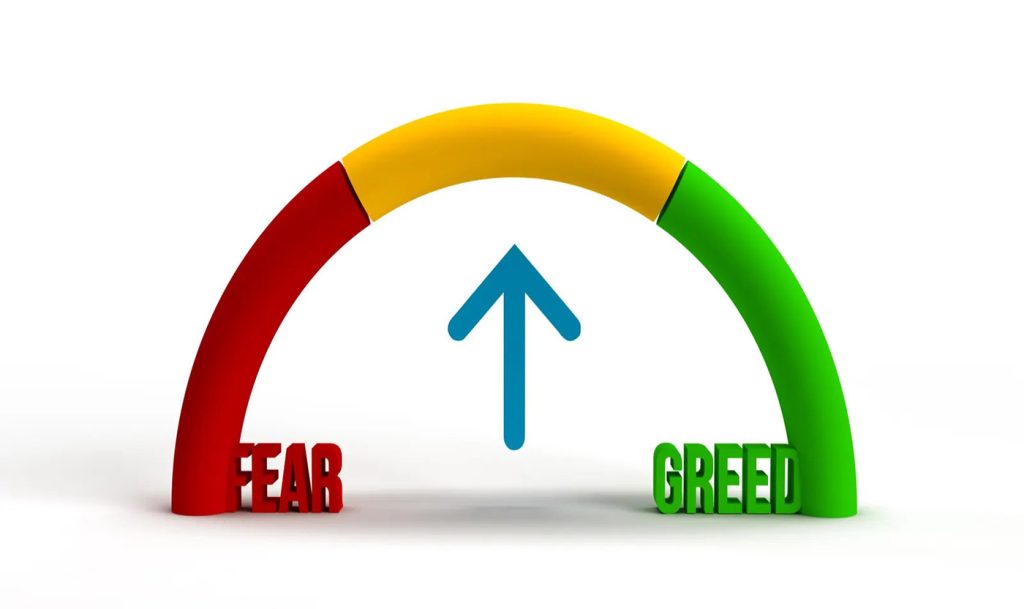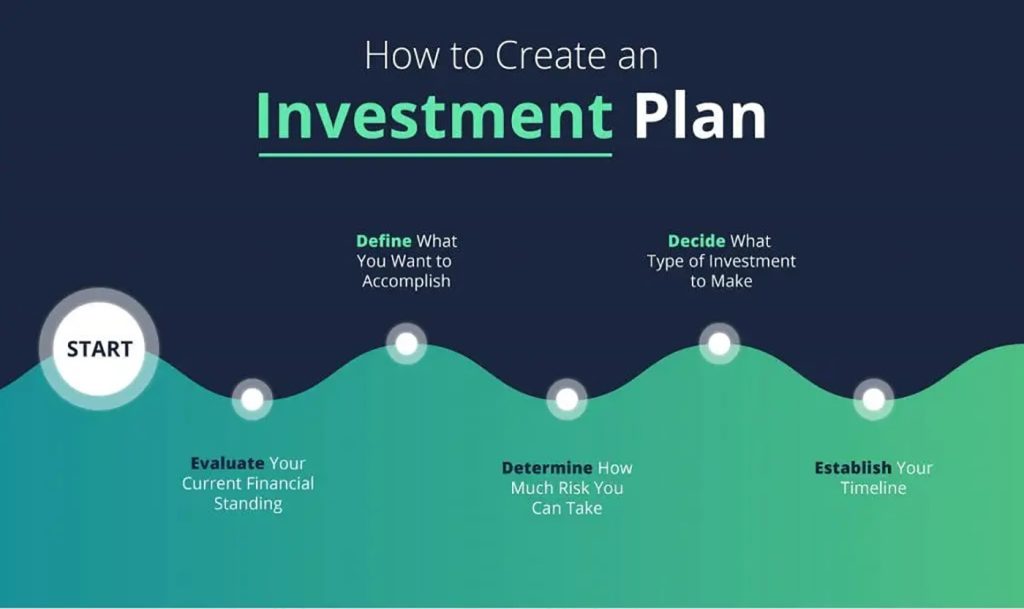I’ve come to understand that one of the biggest challenges isn’t the market’s unpredictability or even identifying the right stocks—it’s the psychological hurdles we face when market volatility hits. The fear that comes with seeing your portfolio value fluctuate can be overwhelming, and if not properly managed, it can lead to poor decision-making and missed opportunities. Over the years, I’ve realized that investing isn’t just about numbers, strategies, or even market trends; it’s deeply tied to our emotions, especially fear.
Market volatility is a natural part of investing, yet many investors are paralyzed by it. Whether it’s a market correction, a global crisis, or a simple price drop in the stocks we own, fear can drive us to make hasty decisions that are often against our long-term best interests. However, it’s possible to overcome this fear, and I’m here to share how I’ve learned to do so—step by step.
In this article, I’ll explore the psychology of investing, why fear is such a powerful emotion for investors, and practical strategies to manage this fear. If you’ve ever found yourself at the mercy of your emotions during a market downturn, this guide is for you.
Understanding the Psychology of Investing
The first step in overcoming the fear of market fluctuations is understanding why we feel the way we do. The stock market is inherently volatile—prices go up, they go down, and sometimes they do so unpredictably. But it’s not just the fluctuations themselves that provoke fear; it’s the way we react to them.
Why Does Fear Dominate in Investing?
Fear is deeply ingrained in our biology. From an evolutionary standpoint, humans are wired to avoid pain and seek safety, which is why we often focus on potential losses rather than gains. When the market goes down, it triggers a “loss aversion” response, which is a psychological phenomenon where the pain of losing is twice as intense as the pleasure of gaining.
In investing, this aversion can be paralyzing. As an investor, I’ve felt that gut-wrenching feeling when my portfolio takes a dive. It’s easy to start thinking about the worst-case scenario, imagining the market crash becoming a financial disaster. This is where many investors go wrong—they react emotionally and often make decisions driven by fear, such as selling off stocks in a panic or staying out of the market altogether.
The Impact of Media and Social Influence
Another major psychological factor contributing to fear is the influence of media and social networks. News outlets, blogs, and even discussions with friends and family can amplify fear. When markets are down, the media loves to sensationalize the situation, often predicting gloom and doom. The more you expose yourself to these narratives, the more likely it is that you will internalize this fear and let it affect your investment decisions.

The Importance of a Long-Term Perspective
One of the most important lessons I’ve learned as an investor is the value of maintaining a long-term perspective. This doesn’t mean ignoring short-term volatility, but rather understanding that market fluctuations are a normal and often healthy part of the economic cycle. The market moves in cycles—booms, busts, and everything in between—and those who succeed in the long term are the ones who learn to navigate the downturns without letting fear control them.
Market Cycles and the Investor’s Mindset
The market is cyclical, and the inevitable volatility is a key component of these cycles. Historically, the market has always bounced back from downturns, whether it’s the dot-com bubble, the financial crisis of 2008, or the more recent COVID-19 market crash. In fact, it’s often the most fearful times that present the best opportunities for long-term growth, as stocks are undervalued and ripe for investment.
That said, it’s essential to remember that investing isn’t a “get-rich-quick” endeavor. Successful investing is about patience and having a clear strategy. When I remind myself of this, it helps me stay calm during turbulent times. I don’t allow temporary dips to derail my long-term goals.
Strategies to Overcome the Fear of Market Volatility
Now, let’s dive into actionable steps to help you manage the fear that arises during market fluctuations. These strategies aren’t about ignoring the ups and downs of the market—they’re about learning to navigate them more confidently and maintaining your emotional equilibrium.
1. Create a Solid Investment Plan
The first step to overcoming fear is having a well-thought-out investment plan. When I started investing seriously, I realized that fear often arises when I’m unsure of what to do. Having a clear plan helped me feel more in control.
Your investment plan should outline:
- Your financial goals (retirement, buying a home, funding education, etc.)
- Your risk tolerance (how much volatility you’re comfortable with)
- Your investment timeline (when you’ll need the funds)
- Asset allocation (how you’ll diversify your portfolio)
The clearer your plan, the less likely you’ll be swayed by short-term market movements. You’ll know exactly why you’re holding certain stocks or bonds, which can provide much-needed reassurance during a downturn.
2. Focus on Fundamentals, Not Fear
When markets start to dip, it’s easy to get caught up in the panic. However, remember that stock prices often fluctuate based on short-term events, and these don’t always reflect the underlying health of a company. Instead of reacting impulsively, focus on the fundamentals of the companies you’ve invested in. Are their earnings growing? Do they have strong management? Is their business model solid? If the company’s long-term prospects remain strong, temporary price drops should not trigger a panic sell-off.
3. Diversification Is Your Friend
Diversification is another way to manage risk and reduce fear. By spreading your investments across different asset classes, sectors, and geographical areas, you protect yourself from the full impact of a downturn in any one area. Even if one stock or sector takes a hit, the others may help cushion the blow. For instance, if you invest in both stocks and bonds, bonds typically do well when stocks are down, which can offset losses in the equity portion of your portfolio.
4. Avoid Checking Your Portfolio Too Often
Constantly checking your portfolio during times of market volatility can heighten anxiety and increase the likelihood of emotional decision-making. Instead, I’ve found it more helpful to limit how often I check my investments. Set a schedule to review your portfolio, such as quarterly or bi-annually, and stick to it. This reduces the temptation to make knee-jerk reactions based on short-term market movements.
5. Understand the Power of Dollar-Cost Averaging
Dollar-cost averaging (DCA) is a strategy that helps smooth out the impact of market volatility. By consistently investing a fixed amount of money at regular intervals (e.g., monthly or quarterly), regardless of market conditions, you buy more shares when prices are low and fewer when prices are high. This reduces the emotional impact of market swings and helps you stay disciplined during volatile periods.
For example, during a market dip, you’ll end up purchasing more shares at lower prices, which can work to your advantage when the market recovers.
6. Manage Your Emotional Responses
Emotions are a natural part of investing, but it’s crucial not to let them drive your decisions. When you feel fear or anxiety, take a step back and ask yourself whether the decisions you’re considering align with your long-term goals. Often, the best course of action is to do nothing at all. The market will recover, and reacting out of fear can lead to unnecessary losses.
If you find it hard to manage fear, consider keeping a journal of your emotional reactions to market events. Writing down your thoughts can help you identify patterns and become more aware of your emotional triggers. Over time, you’ll get better at recognizing fear-driven impulses and resisting them.

7. Seek Knowledge and Support
One of the most important things I’ve done is continue to educate myself. The more knowledge you have about the markets, the less intimidating they become. Invest time in understanding market cycles, economic indicators, and investment strategies. There are many great resources available to help you learn:
- Investopedia (investopedia.com): A comprehensive resource for learning about investment strategies, financial terminology, and market trends.
- The Motley Fool (fool.com): Offers insightful analysis and stock recommendations that can help guide your investing decisions.
- Yahoo Finance (finance.yahoo.com): Provides daily news and analysis, as well as tools to track stocks and economic indicators.
Additionally, consider seeking support from other investors. Whether it’s a trusted financial advisor, an online forum, or a local investment group, connecting with others can help you stay grounded and get valuable advice during turbulent times.
Embrace Volatility with Confidence
The fear of market volatility is something every investor faces at some point. But with the right mindset, strategies, and tools, you can learn to navigate these fears and make sound investment decisions. Market fluctuations will always happen, but they don’t have to derail your investment strategy.
Remember, the key is to focus on the long-term, stick to your plan, and stay calm when volatility strikes. By managing your emotions and following these strategies, you can turn fear into confidence and set yourself up for financial success.



